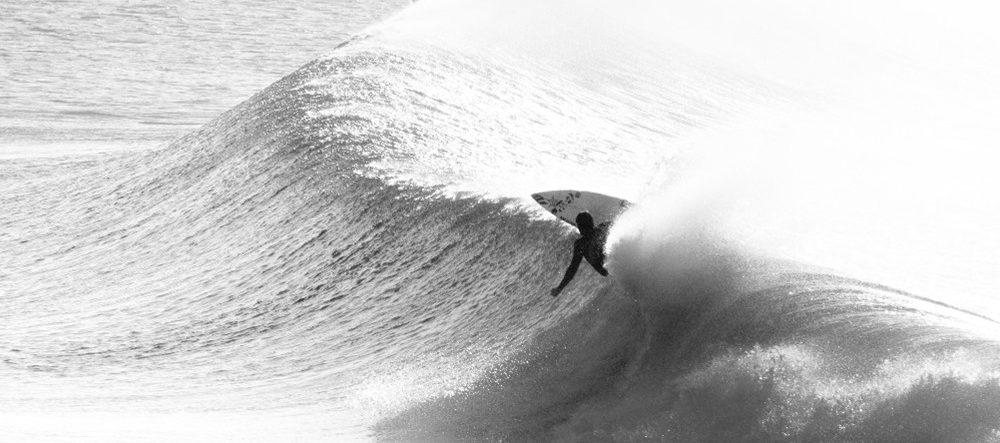According to Nguyen (no date), the word ‘surf’ originates from a corruption of the work ‘sough’, meaning a rushing sound, and may also derive from the Indian word ‘suffe’, used with reference to the coast. For those that love the sea, the rushing sound of surf is crucial, but it is often underexplored. The vitality of these rushes, and the rhythms they create, become integral to the momentary experience that defines the place of the surfed wave.
Here are some short clips of surf spaces, and the sounds associated with them. The text is inspired by a book chapter written by Jon Anderson and Lyndsey Stoodley which focuses on the importance of sound in contributing to the surfing experience. There follows an extract from this chapter (and a copy of the chapter itself can be found here).
You flick to the stated page number, scan the title, confirm your choice. You read this now. You sigh, you fidget, you focus. Your eyes on the text, mind on the meaning of the words, you block out that which distracts: the noise of the couple chattering on the next table, the general din of the café, the cappuccino machinations; foot-falls; snippets of chat; tones and shrills. Zoning in on the words, maybe you hear them as your eyes read and brain processes; you perform them internally, the rah-‘sp’ of the r’s, the ki-ck-ing k’s, the silent pauses of punc… tuations. But mostly you skip along; falling onto a form of words you are familiar with, and resonate with what you feel you may need to know. But now, pause for a moment, turn your head, listen: perhaps you can hear the sough [suff] of the sea.
“Hold this page close to your ear – you can almost hear the ‘whomp’ followed by a ‘phhsssh’ noise. Isn’t it magical?” (Selway, 2009: 55).
In many surf spaces, the silence of the sea can be their defining aspect, as registered during this moment at Caswell Bay, Wales https://youtu.be/8KVImJnEZCU
In other surf spaces the sound of the wind is the dominant presence, as in this case of Freshwater West, Wales https://youtu.be/R13nnzYPfC4
From the shore, the contributions of water molecules on rock or sand offer a key sound to surf spaces, as in these cases of Hawaii https://www.youtube.com/watch?v=6f0y1Iaorug&t=52s and Kirra, Australia https://youtu.be/jqzd24tOXk8 , https://youtu.be/ZRiDJ_DdJIs
The calm serenity of some surf spaces renders it possible for the aspiring surf rider to gain a relational sense of calmness and tranquillity through their engagement with the sea, see for example this moment in Rhossili, Wales https://youtu.be/6qhyIHsv6jg . This relational sensibility is well articulated by Allen:
“Shifting, yet motionless, I dance across the reef, ever so gently. The tide now is extremely low. Islands appear where I once rode days earlier when the tide was in. My senses awaken in the cool water and again I ride… The coolness is invigorating to my soul, my senses are heightened, the sounds and smells add to the experience. I paddle in slow motion as if a strobe light were upon me. Each drop of water that l lift up with my hand as I raise it back out of the water, drops back from which it came, each in succession. The first appearance of randomness is soon overshadowed by the existence of natural rhythm within spontaneous movement. Within spontaneity, arises rhythm, beautiful sound emitted from each reaction to my own gestures. The kelp beds themselves, move in rhythm to the incoming swells. Flowing, with each successive movement from the winds, tide and rolling waves” (Allen, 2007: 77-78).
From and even on the sea itself, different sounds are generated. Here the aspiring surf rider is closer to the water, and they themselves contribute to its auditory and physical “movement”. This may be through board, boat, or body, depending on the technological means of floatation and ride, and also through the chosen means of propulsion – arms, legs, or paddle. As in the following examples Caswell, Wales https://youtu.be/IAv8MnhT2ng, and Rhossili, Wales https://youtu.be/jEjWldibUzs one can detect the rhythmic sound of paddle entering and exiting the aqua-assemblage, whilst also the mild bounce of boat on water.
Aspiring surf riders need to register and be attentive to these complex rhythms in order to successfully negotiate, and eventually ride, breaking waves , see for example https://www.youtube.com/watch?v=qJUYzA5d0cQ .
Being out of sync with these material and melodic rhythms marks the human out as a poor reader – but perhaps more accurately put – poor register, of the sounds and vibrations of the surfing event space. Such (lack of) awareness makes any attempt to catch a wave almost impossible, and the effort to simply be on the sea drainingly difficult, see https://www.youtube.com/watch?v=Y3hZwZ9ksu0 .
However, if one can register the rhythm of a surf space, one can catch a wave. When this occurs, one senses the “shhhhh” of incoming rustly waves, a marked crescendo, often a quiet moment of rise, and sometimes slap! (as in this case at Port Eynon, Wales https://youtu.be/eKJuZCldSNM and Porthcawl, Wales https://youtu.be/ce2IMGviNEQ ).
